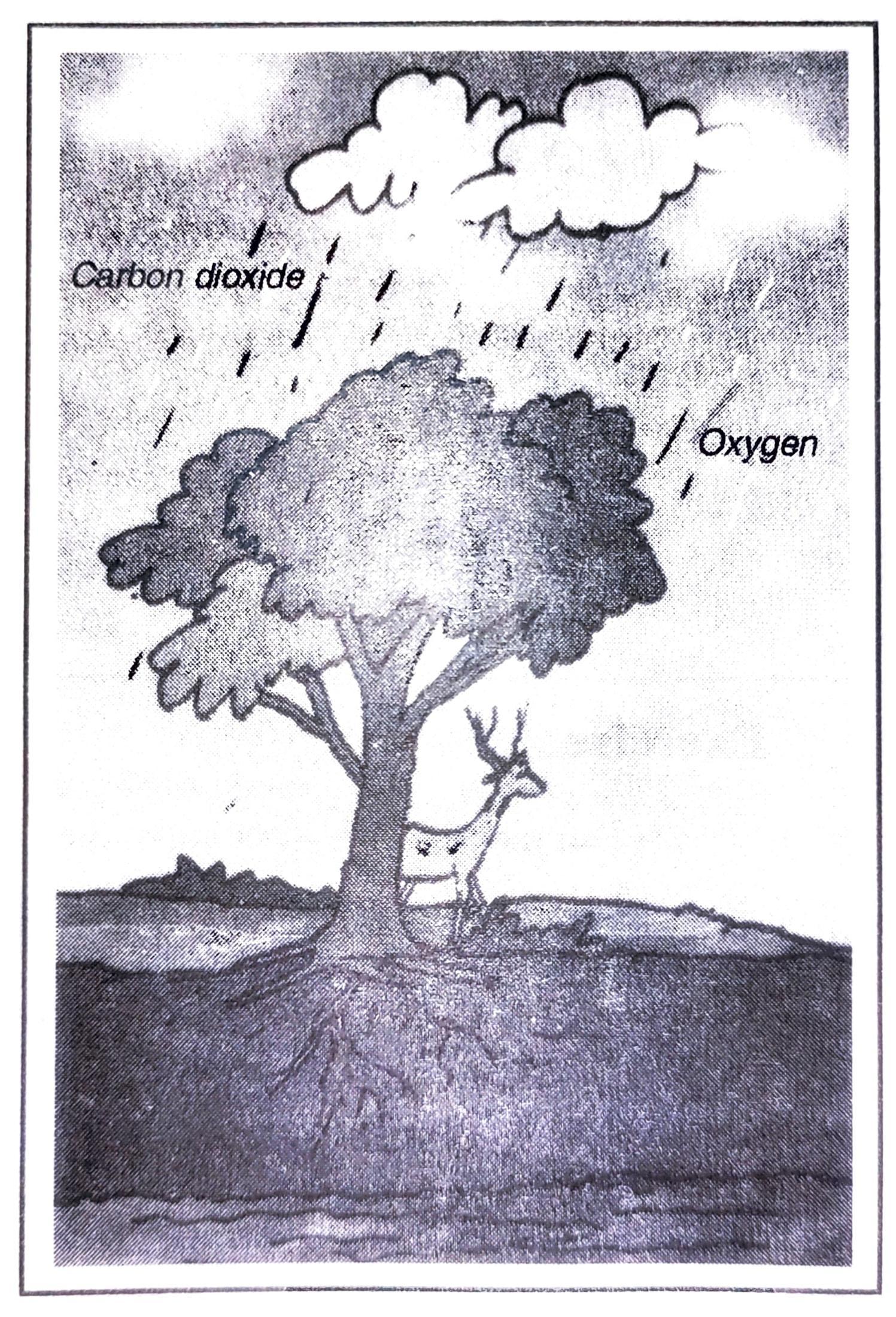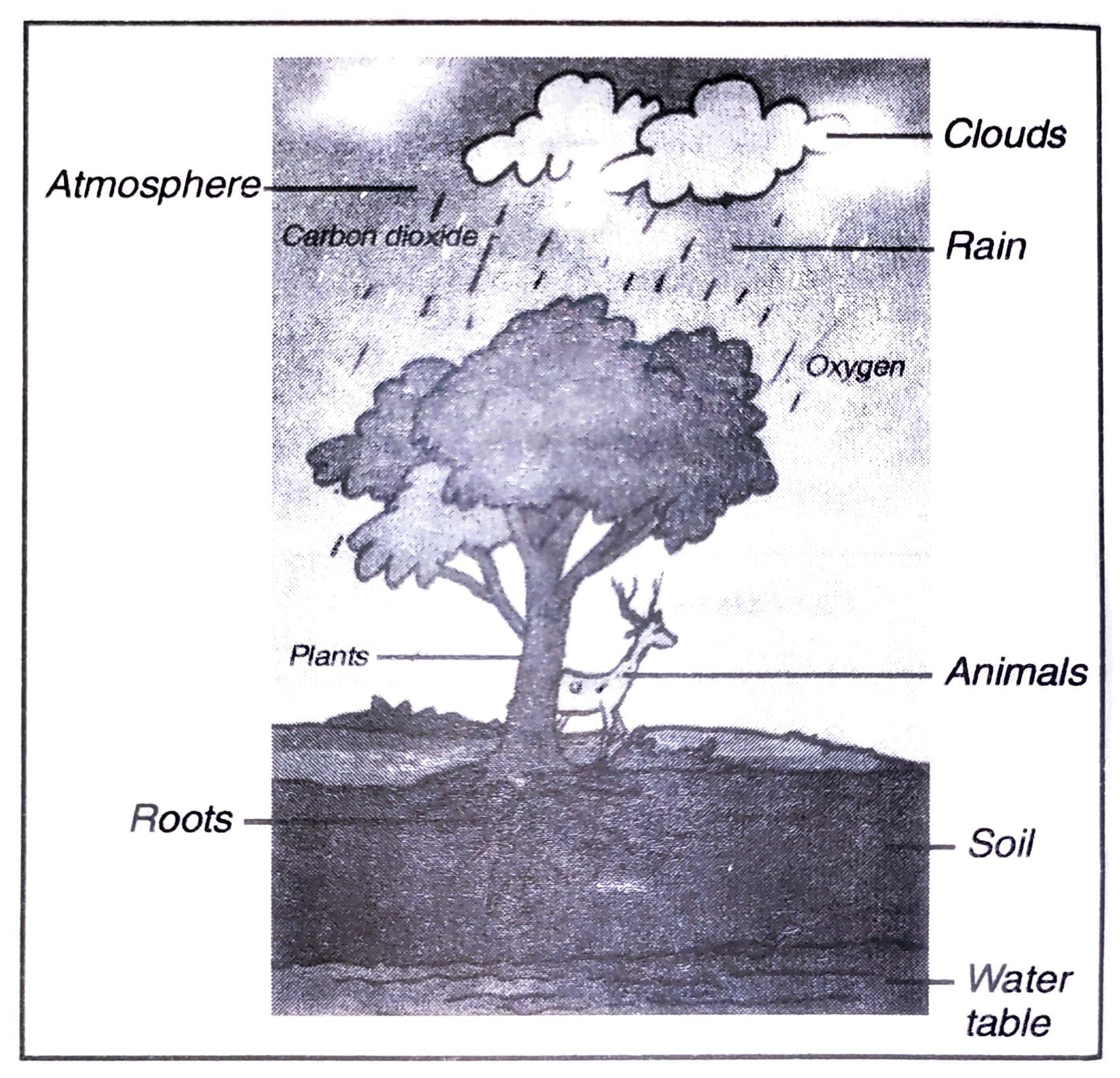SEBA Class 7 Science Chapter 8 Forests: Our Lifeline – Textbook Solutions & MCQ (Part II)
Find Class 7 Science Chapter 8 “Forests: Our Lifeline” Solutions for SEBA Assam (English Medium) students. This chapter, from Part II of the Science book, explains the importance of forests in maintaining ecological balance, their role in the water cycle, carbon dioxide absorption, and biodiversity conservation. Students will learn about deforestation, its consequences, and ways to protect forests. Our solutions include detailed textbook answers, multiple-choice questions (MCQs), and well-explained concepts to help students prepare effectively for their exams.
Class 7 Science
Chapter – 8 (Part II) Ospin Academy
Forests: Our Life Line
EXERCISE
Q. 1. Explain how animals dwelling in the forest help it grow and regenerate.
Ans: Animals help in growing and regenera- ting forests in many ways. Animals work as the cleaning agents in the forest. Micro-organisms work on dead bodies of plants and animals and degenerate them. Animals also help in pollination which helps in growing a number of plants. Herbivores help the carnivores to grow as they serve as food for them. Thus flora and fauna grows in the forest.
Q. 2. Explain how forests prevent floods.
Ans: Forests can absorb a lot of water. The roots of the trees absorb the water and prevent it from flowing away. This helps in preventing floods.
Q.3. What are decomposers? Name any two of them. What do they do in the forest?
Ans: Decomposers are the organisms which feed on the dead bodies of the plants and animals. They clean the forests of the decaying dead bodies and replenish the nutrients back to the forest soil e.g. beetles and grubs.
Q. 4. Explain the role of forest in maintaining the balance between oxygen and carbon dioxide in the atmosphere.
Ans: Plants release oxygen in the atmosphere during the process called photosynthesis. This oxygen is inhaled by the animals living in the forest for their respirations. During respiration, they release carbon dioxide, which is absorbed by plants. In this way the O₂-CO₂ cycle goes on in the forest.
Q.5. Explain why there is no waste in a forest.
Ans: There is no waste in the forest because decomposers convert all the dead bodies of the plants and animals into the humus. Humus gets added to the soil and no waste is remained.
Q. 6. List five products we get from forests.
Ans: Products we get from forests:
(i) We get wood from forests which is used for many purposes like making furniture, paper etc.
(ii) We get medicines from forest.
(iii) We get fodder for our animals from forest.
(iv) We get gum, wax etc.
Q. 7. Fill in the blanks:
(a) The insects, butterflies, honeybees and
birds help flowering plants in _________.
Ans: Pollination.
(b) A forest is a purifier of ________ and _________ .
Ans: Water and air.
(c) Herbs form the ________ layer in the forest.
Ans: Lowest.
(d) The decaying leaves and animals droppings in a forest enrich the ________.
Ans: Soil as humus.
Q. 8. Why should we worry about the conditions and issues related to forests far from us?
Ans: We should be worried about deforestation because it would lead to floods, increase in earth’s temperature, decreasing animal habitats and soil erosion.
Q. 9. Explain why there is a need of variety of animals and plants in a forest.
Ans: All plants and animals sustain the forest life. CO₂-O₂ cycle goes on due to animals and plants. Animals convert the dead and decaying matters into humus and increase the fertility of soil. All food chains and food webs need variety of plants and animals.
Q. 10. In Fig 17.10, the artist has forgotten to put the labels and directions on the arrows. Mark the directions on the arrows and label the diagram using the following labels:
Clouds, rain, atmosphere, carbon dioxide, oxygen, plants, animals, soil, roots, water table.

Fig. 17. 10.

Fig. 17. 11.
Q. 11. Which of the following is not a forest product?
(i) Gum
(ii) Plywood
(iii) Sealing wax
(iv) Kerosene
Ans: (iv) Kerosene.
Q. 12. Which of the following statements is not correct?
(i) Forests protect the soil from erosion.
(ii) Plants and animals in a forest are not dependent on one another.
(iii) Forests influence the climate and water cycle.
(iv) Soil helps forest to grow and regenerate.
Ans: (ii) Plants and animals in a forest are not dependent on one another.
Q. 13. Microorganisms act upon the dead plants to produce:
(i) sand
(ii) mushrooms
(iii) humus
(iv) wood.
Ans: (iii) Humus.
Q1: Why are forests called “Our Lifeline” in Class 7 Science?
Forests are called our lifeline because they maintain ecological balance, regulate the climate, prevent soil erosion, and provide oxygen.
Q2: What are the major threats to forests?
The major threats to forests include deforestation, illegal logging, forest fires, and urbanization, which lead to loss of biodiversity.
Q3: How do forests contribute to the water cycle?
Trees in forests help in water absorption, transpiration, and cloud formation, playing a key role in maintaining the water cycle.
Q4: Where can I find Class 7 Science Chapter 8 solutions for SEBA Assam?
You can find detailed textbook solutions, MCQs, and explanations for SEBA Assam Class 7 Science Chapter 8 (Part II) on this page.
Q5: Where can I find solutions for all Class 7 Science chapters?
To get solutions for all Class 7 Science chapters, Click Here
NCERT Solutions
Get Free NCERT PDFs
If you want to download free PDFs of any chapter from any subject, click the link below and join our WhatsApp group (যদি তুমি যিকোনো বিষয়ৰ বিনামূলীয়া PDF ডাউনলোড কৰিব বিচৰা তেন্তে তলৰ লিংকটোত ক্লিক কৰা আৰু আমাৰ WhatsApp গ্ৰুপটো Join কৰা):

